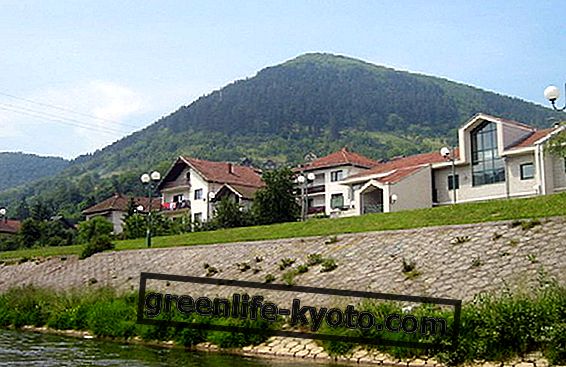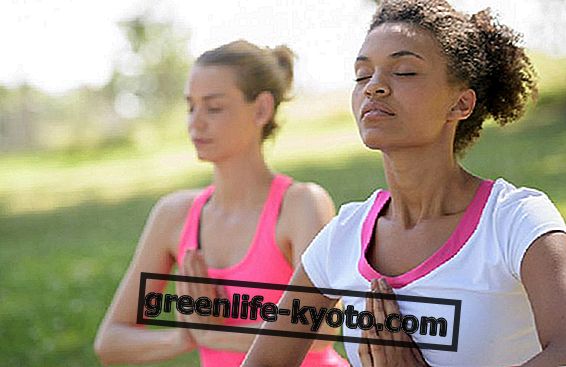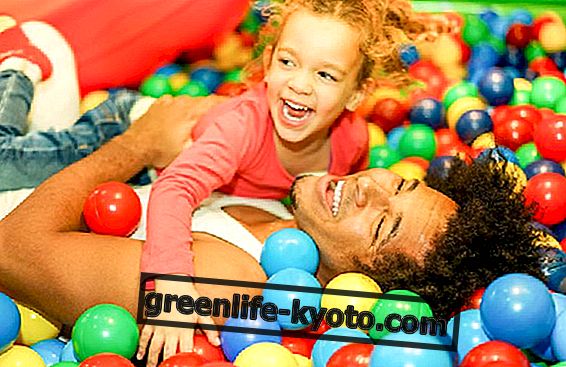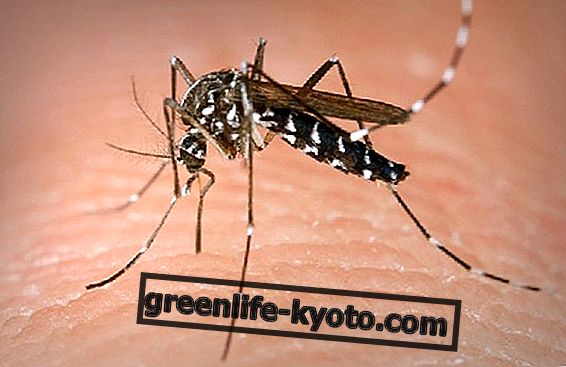Curated by Giada Bevilacqua, researcher and dancer
The phases of the child's motor development are the stages through which the newborn moves from the horizontal to the vertical position, through the appearance of new postures and new movements. Let's find out better.

The movements of the fetus
Even before birth, and from the earliest stages of gestation, contractile capacity is the first form of expression of the embryo and later of the fetus. Around the eleventh week the connections of the nervous system are active and allow the fetus to perform some reflex movements according to a genetically determined program.
Certainly it is not a question of conscious movements, but of motor responses that are activated according to an external stimulus (for example the fetus that kicks when the feet touch the uterine wall).
What is brutally modified by birth is the nature of the element in which it will grow and develop, ie the gravitational environment .
The first nine months of its development took place in the amniotic fluid and not in the air, which completely changed the conditions from a physics point of view. Furthermore, the enveloping space of the uterus of which it was easy to feel and touch the boundaries opens to infinity, and the immature sensorial functions do not allow the newborn to feel its spatial limits. And finally, after birth the newborn raised in the absence of gravity (the weight of the fetus is almost entirely carried by the mother), makes him aware of his own body weight.
Here are the fundamental changes that must be taken into consideration in order to understand what a newborn baby is being measured with, who gradually becomes skilled in movement .
And to fully understand the ways in which the first movements emerge, the path of neurological maturation must be taken into consideration. In fact, it is performed in the cephalo-caudal direction, ie it goes from the head towards the coccyx, and consequently, what topologically is closer to the head matures temporally before the rest. This is why when a newborn makes the first attempts at rotation on its side it does so in this order: first it rotates its head, later the contralateral shoulder, and only at the end the pelvis and legs, which according to this logic are the least innervated areas and whose maturation takes longer.
The sudden movements of the first months are the result of a still incomplete myelization (myelin is the sheath that covers the nerves). It is thanks to the process of myelization that the child will be able to modulate muscle contraction in view of a well-organized gesture. The terms Phases, Stages in the Pikler study are used to underline now the nature of the process.
The phases of motor development
- Rotate from back to side
- Wheel on your stomach
- Rotate from the belly to the back
- Streak on the belly
- Walk on all fours
- Sits
- He gets upright on his knees
- He stands up with support
- Start walking without holding on
- Walk with confidence
The chronological order of phases 1, 2, 3, 9, 10 always follows the same order of appearance. It means that we will never see a child who passes to phase 3 by skipping steps 1 and 2. While the order of appearance of phases 4, 5, 6, 7, 8 is subjective to the child .
Phases 4, 5, 6, 7, 8 always occur after phase 3 and before phase 9. Phase 7 always precedes phase 8; phases 5 and 6 occur almost at the same time. Phases 6 and 8: often sitting precedes standing up, in 10% of cases they occur in reverse.
The stages
Supine : the newborn seeks equilibrium on its own body axis (vertebral column) which divides the heme - right and left body, while the upper and lower limbs make rapid and increasingly vigorous movements. It is possible to read the effort of the child who gradually finds the right muscle calibration in relation to the force of gravity, an element unknown until before birth. Progressively the movements of the head, upper and lower limbs become more fluid and can be modulated thanks to the process of myelization.
Wheel on the side : the child first raises the shoulder and then the homologous hip to rotate on the side. The head, arm, hip, knee, ankle, foot contribute to balance in this position.
Wheel on the belly : the angle created by the back with the support surface increases more and more until reaching prone on the belly.
Ventral decubitus : this position becomes familiar to the child only after having experienced it for a long time. Opens a new horizon on the possibility of movement and conquest of the territory.
From this position it is now possible to lift the head by resting on the upper limbs (palms of the hands and / or elbows). Later the child can experience the balance of the body in the same position only on the arms and legs through the raising of the pelvis with a progressive reduction of the support surface (premise to the crawling).
For observed children, the displacement used predominantly in this phase is crawling, reptation or crawling (when advancing maintaining the contact of the belly on the support surface using the thrust of the upper and lower limbs).
Roll : using the movements already acquired the child combines them in sequence passing from the back to the belly and vice versa. It has been observed that some children prefer rotation always from the same side while others alternate the two sides. Still others manage to chain one roll after another.
These movements now allow him to reach the desired goal by making it possible to organize the movement in relation to a purpose.
Deepen your child's motor development: movements, postures and displacements

Semi-sitting position : from the extension of the trunk with support on the forearms, the head is now raised and no longer supported as in the first phase. He can thus rotate on his side thanks to the extension of the arm that supports the trunk. At this stage it may appear to be crawling as a mode of movement.
Sitting position : The child is seated when the trunk is vertical on the pelvis and forms a 90 ° angle with the latter. This happens when the physiological curve of the lumbar area is structured, and when the attitude in retroversion of the pelvis has changed, the moment in which the child finds his own base of support on the ischia. It is an enormous conquest of the territory that frees the arms completely and allows the child a longer stay in a manual exploration, as well as a much wider perspective of views.
Kneeling with the erect trunk : the large muscle mass of the buttocks, quadriceps and abdominals intensifies its power thanks to nervous maturation. The articulation of the knees serves as a support base for verticalising the torso.
In this period the sitting, four-legged and kneeling positions are the most prevalent, the semi-sitting, supine positions on the side and the movement through the rolling are much less present. There is an increase in mobility, the crawling is always present while the four-legged movement becomes predominant.
Standing with support : the first attempts at straightening towards the vertical position are the responsibility of the upper limbs. The action is carried out mainly by the upper limbs, which, as we have seen, mature before the lower limbs, still not very innervated. The first steps appear with support in the front, back and side directions.
In most cases the 4-legged movement remains predominant.
Standing : oscillating between balance and imbalance, he experiences the balance standing alone without external supports. The child is standing when its trunk is completely vertical on the pelvis, with the support of the body on the soles of the feet. Soon he will take the first steps without support, discharging the weight from one limb to another, making a transfer of the anterior-posterior weight.
Chronological age of acquisition of movements
- On the side at the age of 18 weeks.
- On the stomach 25 weeks.
- From the belly to the back at 30 weeks.
- Re-interaction schemes at 40 weeks.
- 4 legs and sitting position at 46 weeks.
- Kneeling at 47 weeks.
- Standing at 51 (about 1 year).
- The first steps at 16 months.
- They walk with confidence at half past one.
Conclusions on motor development
When the quality of the adult-child relationship is satisfactory, and when the conditions for the exercise of physical activity are assured on the child's initiative (a good quality of care, an accurate and meticulous organization of the space and a selection of suitable objects at its level of development), the development of movements appears regularly, without significant delay and without the direct intervention of the adult who incites, teaches or prohibits.
As can be seen from the results of Pikler's research, the appearance of large-scale movements is directly proportional to the attitude of the adult who respects the child's motor development rate . The respect by the adult of the free initiative of the child in undertaking the new achievements, besides favoring the knowledge of the environment, structures the child's feeling of competence and confidence in his own abilities.
When motor development enjoys these conditions the observable and tangible advantages concern:
- The absence of postural rigidity and movement.
- A good distribution of muscle tone tensions.
- Participation in the movement of the body as a whole without breaks or interruptions.
- Prudence in undertaking new movements.
- It does not require the help of the adult during his autonomous attempts, he is not discouraged but persists until the accomplishment of his enterprise.
- A high capacity for attention and concentration that allows him to go all the way to the exploration of an object and the realization of a purpose.













